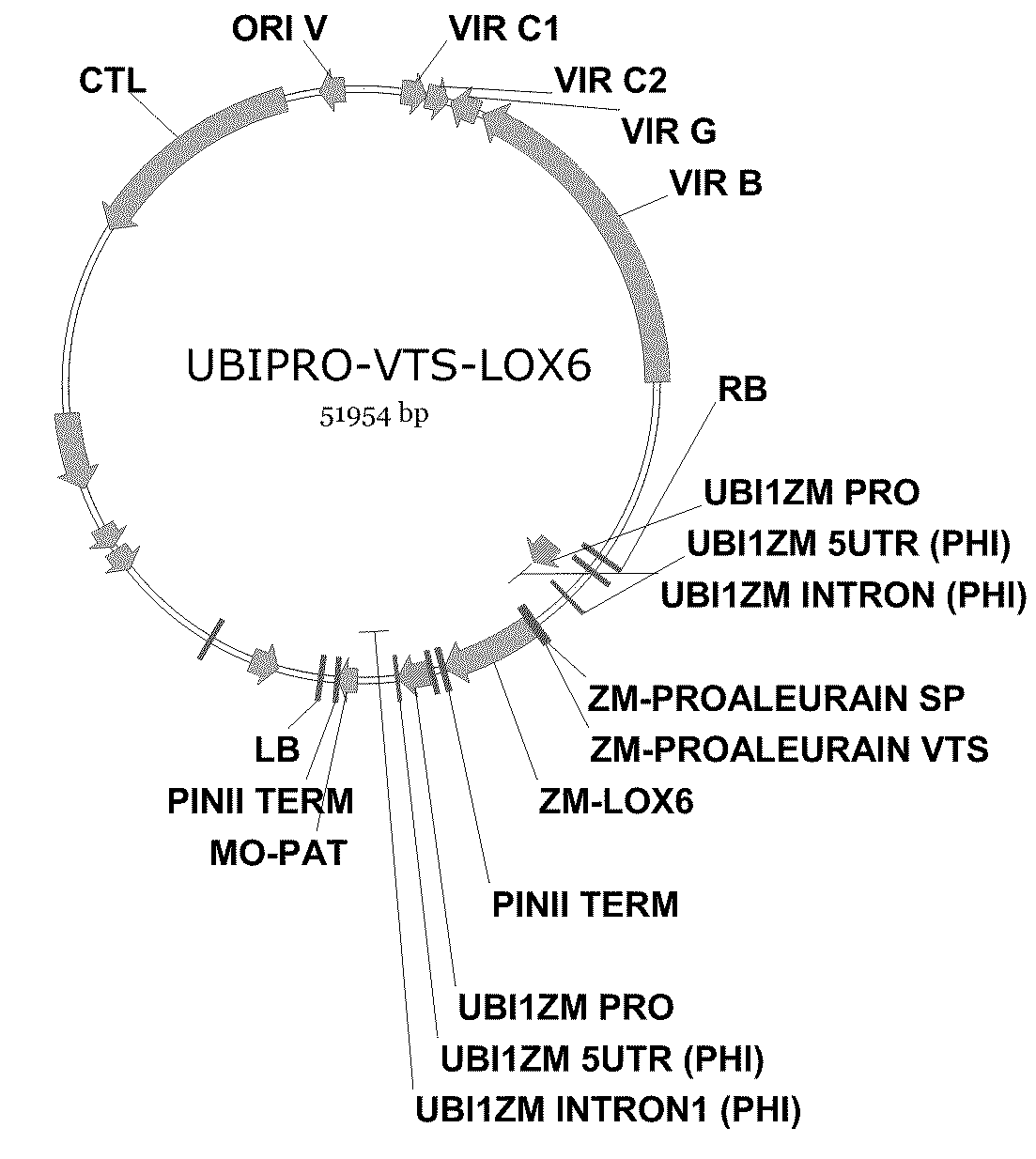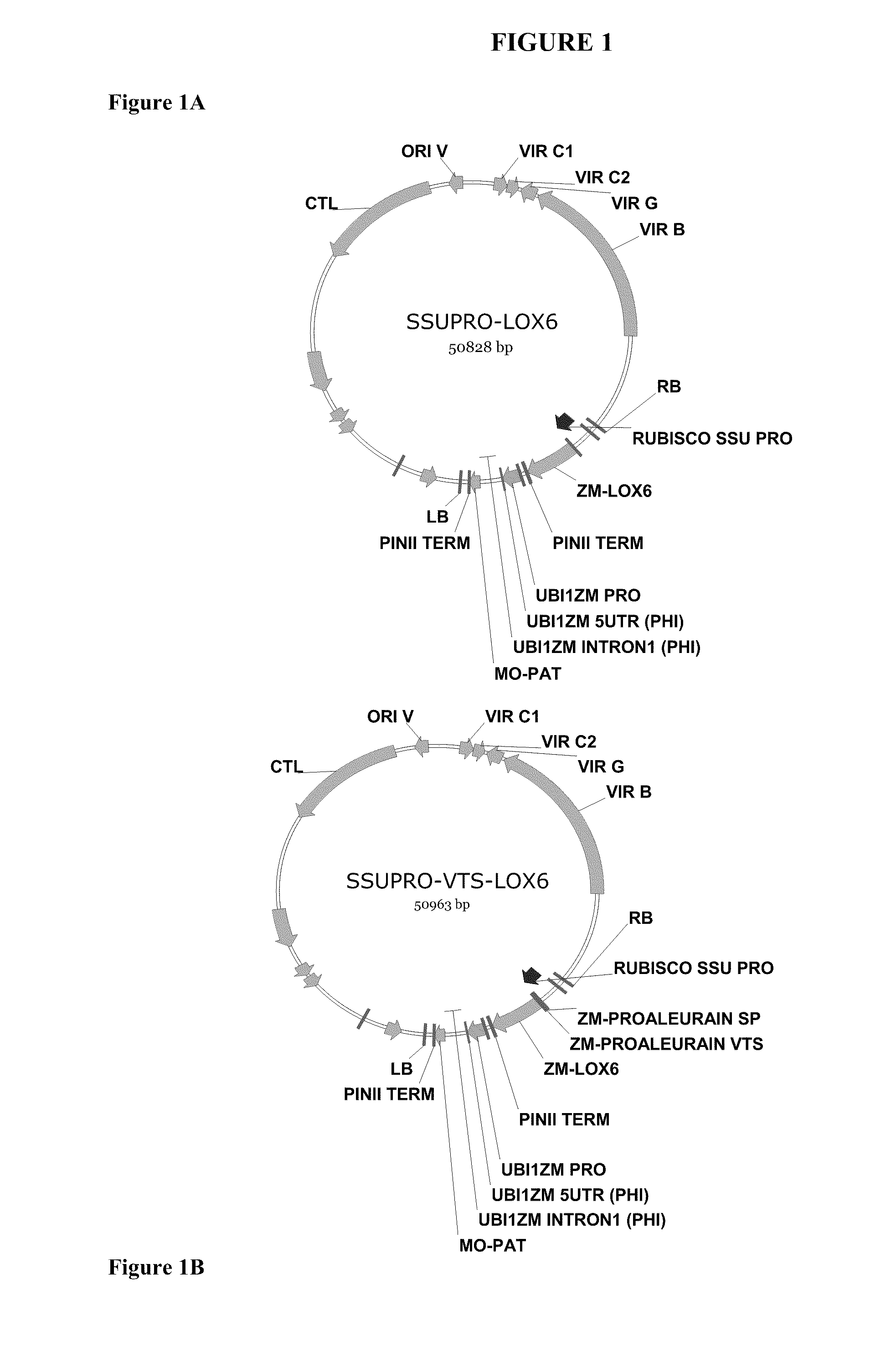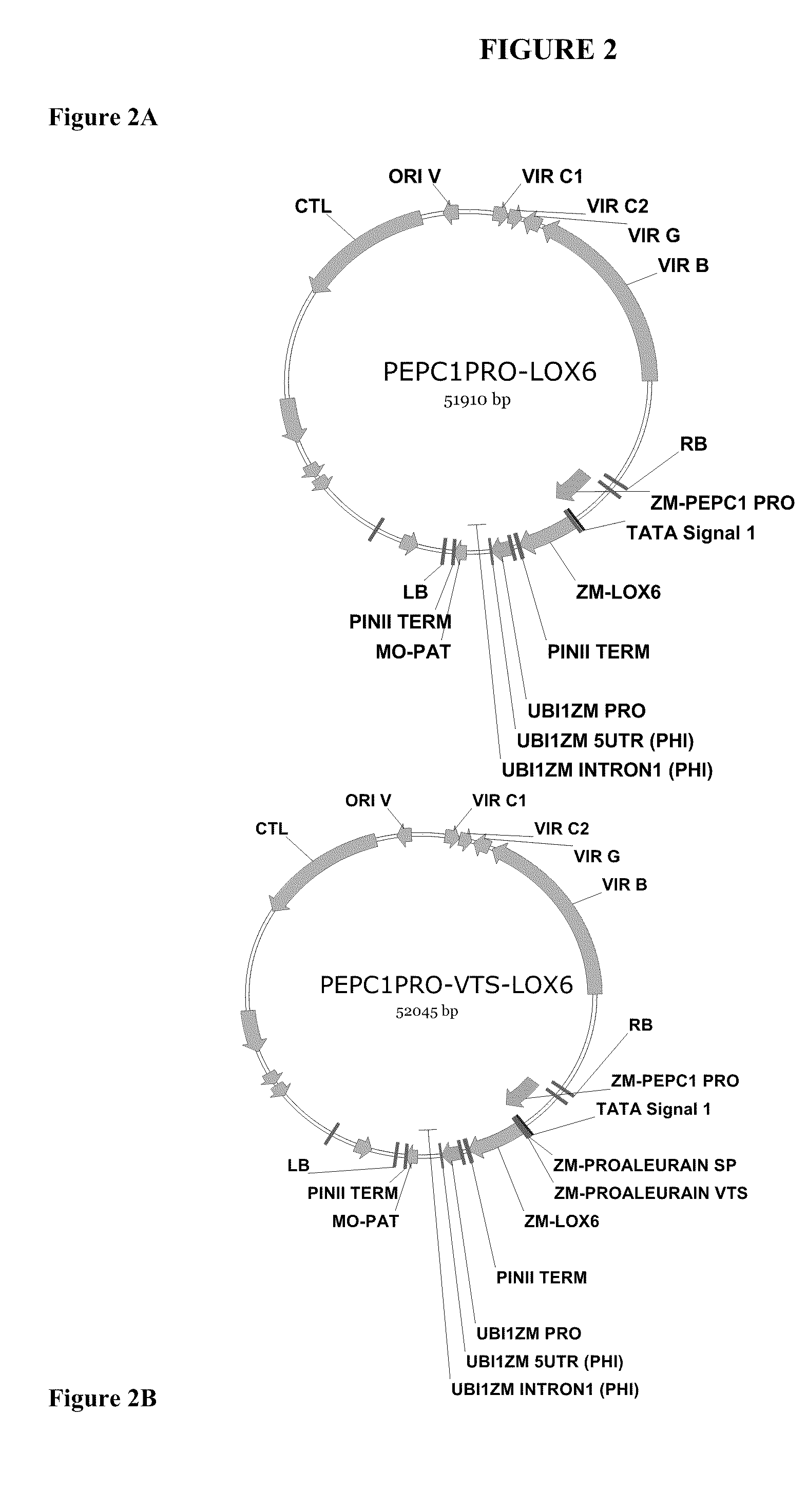Methods For Improving Plant Growth
a plant growth and plant technology, applied in the field of biochemistry and molecular biology, can solve the problems of increasing the cost of agricultural production, reducing the growth rate of plants, so as to reduce the impact of vsp accumulation on cellular metabolic processes, increase the nitrogen storage capacity of plants, and reduce the effect of vsp accumulation
- Summary
- Abstract
- Description
- Claims
- Application Information
AI Technical Summary
Benefits of technology
Problems solved by technology
Method used
Image
Examples
example 1
Induction of Proteins by Nitrogen in the Growth Medium
[0122]Corn seedlings were tested for the induction of proteins by either nitrate or a combination of nitrate and ammonium in the growth medium. Two-week-old plants grown in vermiculite in the greenhouse in the absence of applied nitrogen showed signs of nitrogen deficiency as judged from the yellowing of the leaves. Some yellowing of the leaves was observed even at 1 mM nitrate in the growth medium. In order to identify the nitrogen-inducible proteins, excessive amounts of nitrogen were supplied in the growth medium to induce expression of proteins associated with any endogenous nitrogen storage machinery. Upon application of a 100 mM nitrate-only source of nitrogen, stress (leaf rolling) symptoms were obvious. When supplied with 50 mM ammonium nitrate (100 mM total nitrogen), the plants looked healthier than at 1 mM or 100 mM nitrate. Ammonium nitrate treatment was included to determine if any different proteins were induced rel...
example 2
Protein Processing for Proteomic Analysis
[0124]The 98 kDa protein band from the soluble leaf protein fraction in Example 1 whose expression level increased with increasing nitrate supplementation was excised from a Tris-glycine-SDS gel and minced coarsely. Gel pieces (approximately 200 μL volume) were washed in 500 μL of 100 mM ammonium bicarbonate, then gradually dehydrated in increasing acetonitrile % (15%, 50%, 100%). Dried gel pieces were rehydrated on ice for 1 hr in 250 μL of trypsin (Roche 1418025) solution containing approximately 4 μg trypsin in 15% acetonitrile / 100 mM ammonium bicarbonate. Unabsorbed fluid was aspirated and saved at 4° C. 200 μL buffer was added, and in-gel digestion proceeded for 16 hr at 37° C. Gel pieces were washed in 200 μL of 15% acetonitrile / 100 mM ammonium bicarbonate for 30 min at 37° C. and fluid collected and pooled. Proteolytic peptides were collected by washing the gel pieces in increasing acetonitrile % (15%, 50% and 100%) and pooling aspirat...
example 3
Phylogenetic Analysis of ZmLox6 with Other Proteins
[0127]Upon BLAST analysis against public databases, ZmLox6 protein shows highest homology (43% identity, 57% similarity) with the rice Lox1 protein. Without being bound by theory, this rather low homology suggests that ZmLox6 has evolved independently to perhaps carry out some species-specific function. Upon phylogenetic analysis using Lox proteins from several other plant species as well as from maize, the ZmLox6 protein was found to be closest to the soybean Lox protein (see, FIG. 6). The soybean Lox protein has been previously demonstrated to be a vegetative storage protein that accumulates in the vacuoles of the mesophyll cells surrounding the veins in the leaves (Tranbarger, et al., (1991) Plant Cell 3:973-988). These results suggest that the ZmLox6 protein may also be a vegetative storage protein that may have an orthologous function to that of the soybean Lox protein.
PUM
| Property | Measurement | Unit |
|---|---|---|
| temperature | aaaaa | aaaaa |
| temperature | aaaaa | aaaaa |
| pH | aaaaa | aaaaa |
Abstract
Description
Claims
Application Information
 Login to View More
Login to View More - R&D
- Intellectual Property
- Life Sciences
- Materials
- Tech Scout
- Unparalleled Data Quality
- Higher Quality Content
- 60% Fewer Hallucinations
Browse by: Latest US Patents, China's latest patents, Technical Efficacy Thesaurus, Application Domain, Technology Topic, Popular Technical Reports.
© 2025 PatSnap. All rights reserved.Legal|Privacy policy|Modern Slavery Act Transparency Statement|Sitemap|About US| Contact US: help@patsnap.com



